
Last modified: 2014-04-14 by pete loeser
Keywords: ufe | unidentified flags |
Links: FOTW homepage |
search |
disclaimer and copyright |
write us |
mirrors
Please note our Policy for Submissions and Enquiries.
Below is a series of images of flags that have been provided to FOTW; some we have recognized, and some we have been unable to recognize. If you can help us identify any of these flags, please let us know! Contact the: UFE Editor.
Identification Key:
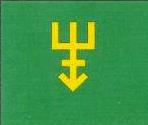 Image from Manuel Garcia, 25 May 2012
Image from Manuel Garcia, 25 May 2012
Does anyone know what this symbol is? It might be an alchemical or astrological symbol
Manuel Garcia, 25 May 2012
I don't say that it is, but it looks rather like the Middle European symbol "Rogacina" - which is defined by the DoV as: "the Polish term for a charge in the form of a stylized arrowhead or spear point, often with a decorated shaft and generally (but not invariably) pointing upward." The etymology of the flag might help?
Christopher Southworth, 26 May 2012
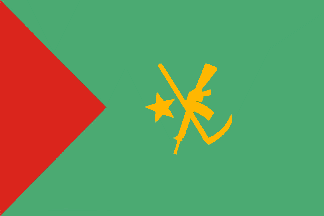 #33a
#33a
 #33b
#33b
Images by Jaume Ollé Casals, 25 May 2012
Two flags of the Ethiopian Liberation Movement that I can't identify. Any ideas?
Jaume Ollé Casals, 25 May 2012
I just noticed that #33a resembles the Revolutionary People's Army (EPR - Ejército Popular Revolucionario) of Mexico. Not sure what it would have to do with the Ethiopian Liberation Movement, but it is very similar in design and coloration. The other flag (#33b) also shares design elements and colors with other EPR variants. Quite curious.
Pete Loeser, 7 February 2013
 #33c
#33c
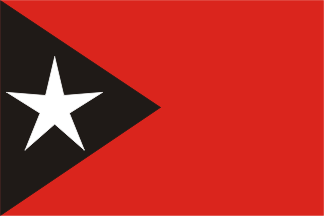 #33d
#33d
Images by Jaume Ollé Casals, 11 February 2013
I'm afraid that they are not related with Mexico or the ERP. In Issue 68 of the Flag Report these two flags are identified, together with some others flags of Ethiopia armed opposition. The green flag with red triangle at its hoist (#33c) is the flag of the Southern Ethiopia People´s Front for Justice and Equality (SEPFJE), today renamed the Ethiopian People´s Front for Equality and Justice (EPFEJ). With better photos I slightly corrected the design.
The red flag with black triangle at hoist (#33d) is from the Benishangul People´s Movement (BPM); from photos I also slightly corrected it (greater triangle, and slightly different star). In the same issue there's three or four others flags of armed Ethiopian opposition movements.
Jaume Ollé Casals, 11 February 2013
Is the Ethiopian People’s Front for Equality and Justice (EPFEJ) the same as the the Alliance for Liberty, Equality and Justice in Ethiopia (ALEJE)?
Esteban Rivera, 21 December 2013

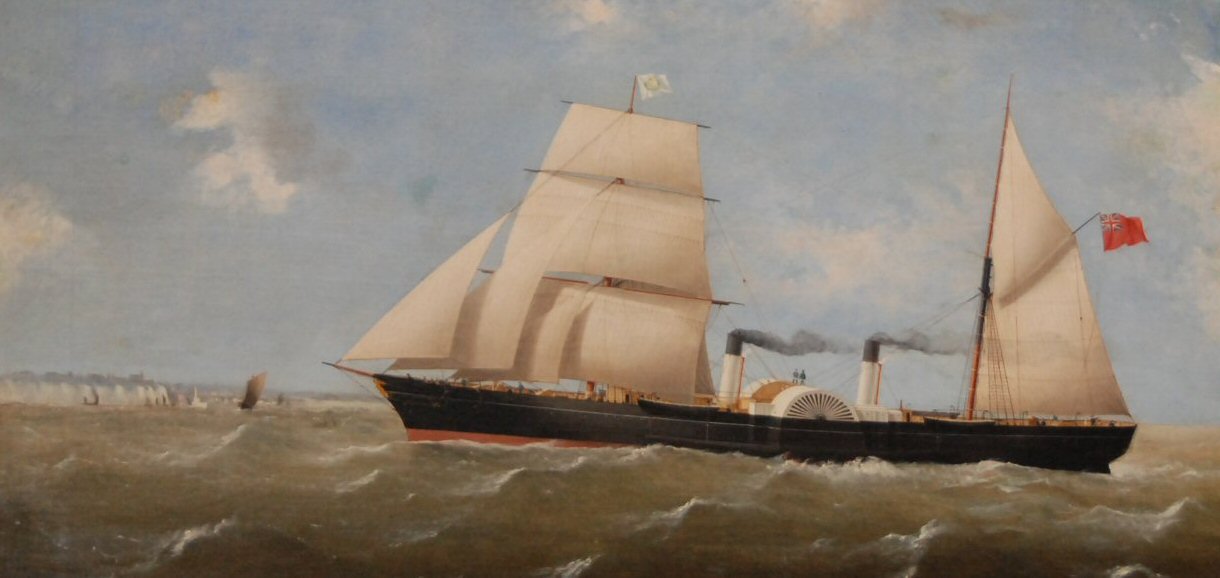 Images from Scott Olsen, 5-6 June 2012
Images from Scott Olsen, 5-6 June 2012
I found your website and was wondering if you could help me identify the flag in the attached photo? I believe it has something to do with a company in the United Kingdom.
Scott Olsen, 5 June 2012
I received a photo of the entire painting - some further details may help in the identification:
- In the distance, are the White Cliffs of Dover, so the location is the English Channel.
- The ship is flying the British merchant ensign, design post-1801.
- The ship is a combination sailing ship/paddle wheel steamer and according to Wikipedia the first such ship to cross the
Atlantic was in 1819. However, Wikipedia also reports that no ship "repeated" the journey until the 1840s.
- Assuming the view is to the east (to match the position of the chalk cliffs), the painting shows sails billowing from a
southerly or southeasterly wind, but the smoke and flags blowing as if in a northerly wind, so the painting may not be
one by a seasoned sailing ship painter.
Rob Raeside, 6 June 2012
I've nothing to say about the flag, but the White Cliffs of Dover are also the White Cliffs of Cap Gris Nez, Cap Blanc Nez, etc. In other words, we could be looking beyond the ship to the "French" coast and the compass points are reversed.
André Coutanche, 7 June 2012
 Image from Michael Wilson, 17 June 2012
Image from Michael Wilson, 17 June 2012
I came across your wonderful website when trying to find out information about the flag in the enclosed picture. Do you have any information about this White Flag with a Red Eagle and Alternating Color Stars?
Michael Wilson, USN Retired, 17 June 2012
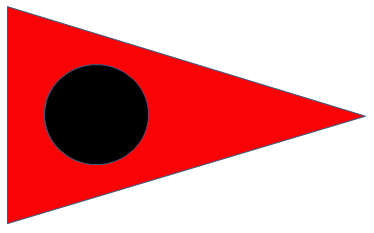
I have recently come into possession of a flag from the World War II era. It was found in the personal property of a great uncle who flew hellcats off aircraft carriers during the war and was later a Blue Angel. He had a triangular flag, so probably its a naval flag. It has a singular black circle on a field of solid red. I would guess it is some sort of Japanese flag, but I do not know.
Jason Henderson, 21 June 2012
Sounds like the Navy Battle E pennant
Rick Wyatt, 21 June 2012
That is the "Meatball" pennant, awarded in the US Navy for best performance in gunnery, engineering and combat efficiency.
Ned Smith, 21 June 2012
See Sea Flags for more.
Joe McMillan, 23 June 2012
Actually, the speculative rendering is closer the flag I have than the other drawings.
Jason Henderson, 23 June 2012
The short triangle is how it’s shown in the construction sheet in NTP-3(B). I think ships manufacture their own pennants, and that they’re not carried in the supply system, so I’m sure there’s variation.
Joe McMillan, 23 June 2012
We haven't (despite our most valiant efforts) quite caught up with this yet, but when we do the DoV will define a Battle Efficiency and Special Battle Efficiency Pennant as:
"BATTLE EFFICIENCY PENNANT - In US naval usage, a triangular pennant that is flown (from the foremast) to indicate that the vessel has achieved superior performance in an operational environment – an E pennant or meatball (see also ‘award flag’)."
Christopher Southworth, 23 June 2012
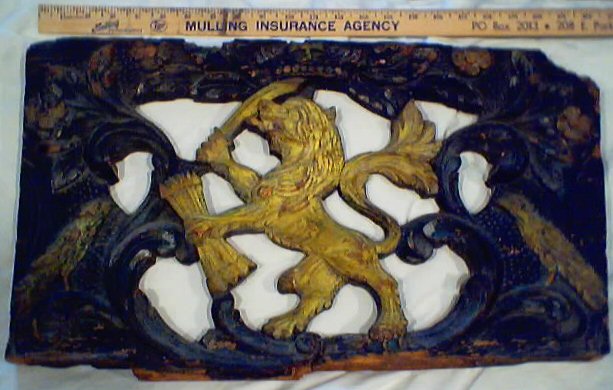 Image by Bob Strouse, 23 June 2013
Image by Bob Strouse, 23 June 2013
I have what I believe to be a crest. I have researched and think it’s the lion on the states-general flag. I hope you can help with any information about it or guide me to anyone that may help. It measures approximately 16 inches by 13 inches and is very old wood.
Bob Strouse, 23 June 2012
Although the animal looks a little wolf-like, I am pretty sure this is intended to be the States General emblem, although our representation could do with some updating.
Rob Raeside, 23 June 2012
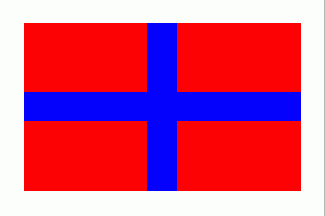 Image by Klaus-Michael Schneider, 25 June 2012
Image by Klaus-Michael Schneider, 25 June 2012
This flag belongs to a Scandinavian Company, [and]...because of the blue cross, my best guess is Norwegian, but as no further information is given, it might also be Danish (or Islandic?) as well. It is a red flag divided by a blue, centred cross. The flag has a white bordure. Source: It was found on a 1889 flag chart of the H. Carly Company from Hamburg. [el1898]. Can anybody assist?
Klaus-Michael Schneider, 25 June 2012
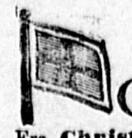 #38a
#38a
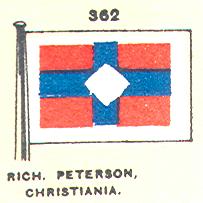 #38b
Images from Neale Rosanoski, 30 June 2012
#38b
Images from Neale Rosanoski, 30 June 2012
Source: Skipet - Norwegian Shipping History Society
I have found 3 mentions online for Jelø-Linien in the Norwegian newspaper Aftenposten for 11 November 1891, 28 February 1892, and 29 June 1902, operating a ferry service between Christiana and Hamburg. The ads give Westergaard & Co. of Christiana as the principal, possibly in the capacity of agents or managers whilst S. Stein is given as the "Expeditør" in Hamburg, but I cannot get a translation of said "Expeditør" but assume that he operated the Hamburg end. The ads give the vessels for the service as the "Jelø" and the "Erna" and vessels of these names were owned by R.M. Peterson.
There were in fact three with the name "Jelø" with the first built 1890 and wrecked 1899, replaced by a bought vessel 1901 sold 1905 replaced by a new vessel built 1907 [and said to be still in service] whilst the "Erna" was built in 1894 and wrecked 1915.
The 3rd "Jelø" is shown by Lloyds 1917-8 as part of the fleet of Rich Peterson who was involved in ocean shipping from at least 1907 with ships under one ship companies then combining them in 1912 under the single company AS D/S Nordsjøen. Rich Peterson may have been the R.M. Peterson and expanding his business or he may have been a son or other relation taking over. In the Aftenposten for 15.4.1906 the ad is for Jelølinien with S. Stein still the Expeditør in Hamburg but Rich Peterson is the name at the bottom of the ad which bears a B&W flag image [#38a] which looks to be the same as that located by Klaus-Michael.
However, the coloured version from Lloyds 1912 [#38b] which is also shown at Skipet, the Norwegian Shipping History Society website, which shows that the flag for Rich Peterson added white diamond throughout the cross fesse point. Looks to me like two flags for two [connected] companies, both from Norway.
Neale Rosanoski, 30 June 2012
The line sailed between Hamburg and Christiana (Oslo). It existed in the late 18-hundreds and early 19-hundreds, I think, run by Westergaard & Co.. At the Hamburg side, business was handled by S. Stein. Though Westergaard were still in business half a century later, I don't have their house flag documented anywhere, so I don't know whether this was their house flag or a specific flag for the line. It's interesting to note, however, that the national Norwegian flag is a red field with a blue cross as well, if an offset cross with a white border.
Peter Hans van den Muijzenberg, 1 July 2012
I didn't find the word expeditør, but ekspedition in a Danish-German Red Dictionary published by Gyldendal. The translation is abfertigung, bedienung, erledigung, which means Neil is right. The expeditør then is the one doing the ekspedition. A suitable English term then would "agent".
Klaus-Michael Schneider, 2 July 2012
We now know that S. Stein is merely the shipping agent in Hamburg. (expeditør means "shipping agent"), but now I've also found a change of the Norwegian agency that Neal derived from his information, and it's quite telling. Aftenposten, 15 October 1904, contains the following announcement:
Jelølinien.This gives us the relation between the Petersons, and indicates that Westergaard & Co. in turn were just agents. And the fact that R.M. Peterson announces this, rather than either of the agents, confirms that he is the owner of the line. Since all his other lines seem to have Moss as their home port, I'd say this line is Norwegian as well. (It would also explain why a line Christiania-Hamburg would be called "Jelølinien".)
Fra 15de ds. vil D'hrr. Westergaard & Co. ophøre at
expedere Jeløliniens Skibe og vil Expeditionen overtages af
min Søn
Ingeniør Rich. Peterson,
Contor Skippergaden 17 e. Telef. 8844. Telegr. adr. "Jelø".
R.M. Peterson.
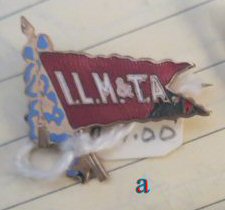
![]() #39a
#39a
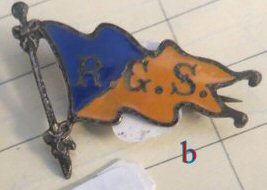 #39b
#39b

![]() #39c
#39c
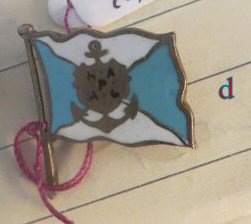
![]() #39d
#39d
Images from Paul Van Vactor, 28 June 2012
Do you know or have you seen any of these? I know there are thousands.
- #39a: white lettering: I.L.M. & T.A. on a red background.
- #39b: lettering R.G.S. on a blue/orange background.
- #39c: white star/blue background
- #39d: royal blue (almost looks green) with anchor.
I checked another site with groups and did not see any, but some were close. Thanks for any help.
Paul Van Vactor, 28 June 2012
The #39d ensign is that of the Hamburg-Amerika Linie (HAPAG = Hamburg Amerikanische Packetfahrt Actien Gesellschaft). Although the pennant [bottom left - #39c] has the same pattern and resembles that of the Zillmann Tegeler (Deutsch-Österreichische Dampfschiffahrtsgesellschaft) flag, it is not an exact match.
Klaus-Michael Schneider, 30 June 2012
The top left [#39a]: white lettering: I.L.M. & T.A. on a red background most likely represents a labor union - the International Longshoremen's, Marine and Transport Workers' Association, now known simply as the International Longshoremen's Association. The union was known by the longer form during the early years of the 20th century, and that was customarily abbreviated as ILM & TA.
I'm not 100% sure of this identification, but think it very probable. Also, I don't know if they actually used a flag like this, or simply designed one for their pins (something we on the FOTW mailing list would call a "Flagoid").
Ned Smith, 30 June 2012
 Image from Klaus-Michael Schneider, 30 June 2012
Image from Klaus-Michael Schneider, 30 June 2012
On 9 May 2012, in HH-Veddel I spotted a ship I couldn't approach. It had a blue funnel with
a red flag on it. On the flag there is probably a white "S" and a blue "G". Part of the name is readable as "SPRING PANDA_" except last letter. The company's name probably begins with "GO..", because a crane(?) can be seen behind bearing the inscription? Can anybody identify?
Klaus-Michael Schneider, 30 June 2012
 Image by Klaus-Michael Schneider, 9 July 2012
Image by Klaus-Michael Schneider, 9 July 2012
The "Spring Panda" belongs to the Seatrade Groningen ship manager. Sources: Cargo Vessels International and the Seatrade website.
Dirk Schönberger, 30 June 2012
![]() #40a
#40a
![]() #40b
Images from Neale Rosanoski, 30 July 2012
#40b
Images from Neale Rosanoski, 30 July 2012
The positive ID is right and wrong. The company is right – Seatrade Groningen B.V. of Groningen, Netherlands. Panels on funnels do not always equate to the houseflag. In this case it does, but not colourwise. As Klaus-Michael says the funnel panel is red, well maybe red and maybe orangy red - air sea rescue style. It depends partly on what paint pot they use and also how the camera treats the colours. I found cameras, film or digital could not be relied upon to correctly show the exact shade at times when you got into this colour range though not having done any ship photography for a while this may no longer apply.
Whatever the colour of the funnel panel that of the flag field is definitely orange. I have a photo of "Spring Bear" in 1994 with there being no doubt about the orange of the flag and the question of the funnel panel and it is backed up by the Josef Nüsse table flag, although the scanning shades in his old and new websites show the problems involved in getting pictures of the right shade. I enclose images from both of Josef's sites, the darker (#40a) being from his old site and the lighter (#40b) from his current site. Depending on your monitor the older one can look more reddish [I have tried them on two monitors with differing results]. Also looking at website link provided by Dirk, their logo panel is definitely orange.
Now the flag is currently on FOTW under "Dutch Houseflags of Shipping Companies[s]" under Seatrade Groningen correctly showing an orange field in Jarig's image, but with a black "G" instead of dark blue. This is a source fault as Brown 1995 shows black in error, as does Brown 1982, For Brown 1982 I would say "perhaps" because this is under the name of N.V. Scheepvaartkantoor “Groningen" which is the name under which the company was formed in 1951 with it changing name in 1973. I have nothing on the flag under the original name so there is a possibililty that the "G" started out black and changed to blue whilst the dark shade currently used could easily have been mistaken for black at the time of the original reports if they were from ship sightings rather than company information.
Neale Rosanoski, July 2012
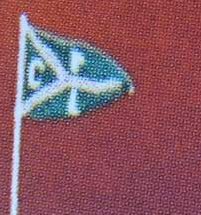 #41a
#41a
 #41b
#41b
Image from Klaus-Michael Schneider, 9 Jul 2012
The unkown German shipping pennant (#41a) can be seen during baptizing the LINGEGAS on 27 February 1981. The B/W flag version (#41b) is painted upon the prow of MERWEGAS also in 1981.
Source: Reinhold Thiel: Dampfschifffahrtsgesellschaft "Neptun" – SLOMAN NEPTUN Schiffahrts Aktiengesellschaft (1873–1998)“, Bremen 1998 ISBN 3-931-785-72-6
Klaus-Michael Schneider, 9 Jul 2012
With such names, it's obviously a Dutch company. That makes it fairly easy to find Lusitania Lijn. Or rather, Lusitania Lijn CPL, as all sources seem to use the combined name. They were listed as a Rotterdam company, but I don't know whether they still exist.
The "CPL" may refer to a cooperation between the Cornelder Lijn, Van Nievelt Goudriaan´s Portugal Lijn (VNG), and the Lusitania Lijn. The Portugal Lijn apparently left the coop in 1962, but I don't know whether the remaining partners kept the co-operation going or whether all that was left were three capitals in the name of one of them.
Peter Hans van den Muijzenberg, 15 January 2012
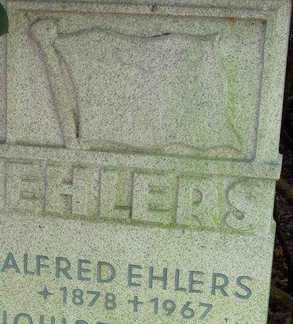 Images from Klaus-Michael Schneider, 9 Jul 2012
Images from Klaus-Michael Schneider, 9 Jul 2012
The tomb stone of Ehlers, which is the name of some Hamburg shipowners, in the second half of the 19th century, stands in Ohlsdorf cemetary. The flag is divided by a saltire. There are also initials, but hard to read. I spotted this image there on 10 May 2012
Klaus-Michael Schneider, 9 Jul 2012
 Image from Klaus-Michael Schneider, 9 Jul 2012
Image from Klaus-Michael Schneider, 9 Jul 2012
This flag belongs to an Everführerei in Hamburg. The picture was taken on 1 January 1909. The name of the company is "C. Haacke." The colours of the flag are unknown. I found this image on 22 June 2010, in Hamburg’s Sandtorhafen.
Klaus-Michael Schneider, 9 Jul 2012
 Image from Klaus-Michael Schneider, 9 Jul 2012
Image from Klaus-Michael Schneider, 9 Jul 2012
This unidentified flag is divided by a yellow saltire on celestial blue (top and bottom) and white (hoist and fly). In the centre is a yellow disc with a celestial blue inscription "Th.B." I spotted this flag on 22 June 2010 in Hamburg’s Sandtorhafen.
Klaus-Michael Schneider, 9 Jul 2012
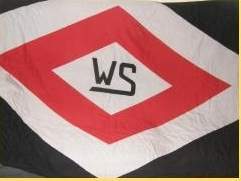 Image from Klaus-Michael Schneider, 9 Jul 2012
Image from Klaus-Michael Schneider, 9 Jul 2012
It is a black flag with lozenge, in lozenge, in lozenge (red–white–red) in the centre. In the inner lozenge is a black inscription, either "WS" or "2W", depending if we see the obverse or reverse. It has remained unidentified since 2008 on flaggenserver.
Klaus-Michael Schneider, 9 Jul 2012
 Image from Esteban Rivera, 19 July 2012
Image from Esteban Rivera, 19 July 2012
Here's a screenshot of Syrian flags from a Al-Jazeera news channel broadcast taken on July 19. The image shows a row of four unidentified flags, all of them military-related.
Esteban Rivera, 19 July 2012
They are (left to right) the Navy, unknown (?), Army, and Air Force (the emblem is a combination of the two old Air Force flags). Nice catch, Esteban. We are lucky to have a chance document these now, being as they are likely to be toast soon along with the institutions they represent.
Eugene Ipavec, 19 July 2012
It looks like the second flag from the left, which is based on the Syrian national flag, has extra text and a coat-of-arms in the upper hoist. Since the news report is about the death of the Defence Minister and his replacement, it seems like the flag might be the Defence Ministry (or Minister's) standard. It is similar to the flags from UFE 11-19 and UFE 11-21.
Andy Shelton, 21 July 2012
![]() #46a
#46a
 #46b
#46b
Images from Peter Hans van den Muijzenberg, 1 December 2012
The Yoopya site, whatever it is, 19 July 2012 documented this image as "Syrian General Fahad Jassim al-Freij is seen in this handout released by Syria’s national news agency SANA on July 18, 2012. REUTERS/Sana/Handout/Files". Their actual image isn't quite as detailed as our copy, but as it's not cut as narrow, it shows more of the top of the flag.
I attach the relevant part as #46a (Top of flag behind general Fahad Jassim al-Freij.). This may well be the General Fahad Jassim al-Freij releasing to the press the information that Minister of Defence Daoud Rajiha, who had been killed in the country's turmoil. An earlier photograph of the minister, shown by the Australian Broadcast Corporation, also includes the top of the flag behind him: This shows some details that aren't visible in the first picture. I attach the relevant part as #46b (Top of flag, behind minister Daoud Rajiha.).
Combining the two, I'd say the symbol in the canton is a wreath around a combined symbol of a foiled anchor, two crossed swords, and two spread wings. Most likely the latter are the bird that's also visible on the air force flag, just as the swords show in the Army flag and the anchor in the Navy flag. The symbol would thus combine the charges of the three branches.
As for a Ministry of Defense flag, I'm not sure. In both images I found, the flag appears in relation to the ministry of defence. The flag would seem to have the position of honour over those of the three branches. Yet, a similar symbol in Lebanon represents the military general staff, rather than the ministry. This too would make sense in the context. I hope someone will be able to read the script sometime and help us out.
Peter Hans van den Muijzenberg, 1 December 2012
 Image from Ian Wilson, 10 August 2012
Image from Ian Wilson, 10 August 2012
I recently acquired a most curious RAF Ensign, curious in that it has a white background. I've tried researching it and during my attempts to gain further information I came across the "Flags of the World" website. The Ensign measure 48" x 24", and made from what I have been informed is a heavy silk. I have had it the Ensign closely examined and confirmed that the background is, and always was, white. There is also substantial age to it.
Can you, or any of your associates help me identify the possible age/reason for such a Flag. The one theory I've had suggested is that it may be a pre-1920 RAF Ensign used briefly before the Royal Navy objected to the white background being used.
Ian Wilson, 10 August 2012
I don't think I have ever seen this flag before. There is little doubt this flag is white,
not faded RAF blue.
Rob Raeside, 10 August 2012
Are you absolutely sure? Michael Faul and I talked and his opinion, like mine, is that we are most likely looking at faded light blue. He pointed out that dye quality varied widely until the 1950s and light blue, like yellow, fades the most easily to a pure white. When I enlarge the image, I think I can also see some light blue pixels, if that means anything.
Pete Loeser, 14 August 2012
I can assure you the background is white and not a faded blue. The colour, shade, pigment, material is identical to that of the white of the RAF Roundel. I have looked at both materials under a magnifying glass and there is positively no difference between the two. I have to think that is the most telling feature, the background being identical to the white of the roundel.
Although not expert materialogists (if there is such a word), the Flag has also been examined at close quarters by a number of customers and friends I've handed it to, and they're confident the background is white and was never blue.
Ian Wilson, 14 August 2012
I wonder if we are looking at a hand-made one of a kind variant, a prototype, or maybe this was an un-official Commonwealth flag used by, perhaps the Canadian Air Force prior to 1941, for example? I thought the Royal Navy had the white ensign more or less tied down.
Pete Loeser, 14 August 2012
As others have said, this could well be a conventional, if very faded, light blue. There is also a (slight) possibility that it is one of a number of trial designs made up in February 1920 by a company called Edgington's, in London. The idea was to try and (finally) choose a design for the RAF flag. The three choices laid before a committee of senior officers were the RAF roundel on plain light blue, the RAF roundel on plain white, and a smaller roundel on white, but with a dark blue border around the edge of the flag. The committee went for a white flag, with the addition of a Union canton - which is what seems to be in the photo. But the final decision was of course the light blue version.
My reading of the document in the National Archives (AIR 5/333 Part II) is that the three designs made by Edgington's were plain flags, without a Union canton, and that no other trial flags were produced, but it is possible, I suppose, that further examples, with a canton were made up, and any documentary record has been lost, but I wouldn't like to put any money on that being the case.![]()
Ian Sumner, 14 August 2012
 Image David Prothero, 14 August 2012
Image David Prothero, 14 August 2012
I think that this is more likely to be a c1919/20 trial flag, though I am not sure that such a flag would have been made-up in silk. Nearly all the Air Ministry’s proposals were strongly opposed by the Admiralty. Many different ideas were floated. Attached is a page of some proposed from the Australian National Archives.
David Prothero, 14 August 2012
I'm with David about the fabric - wool bunting would have made more sense under the circumstances. Neither can I see the clips and cord which would be present if it were intended to be actually flown. It makes me wonder if it was intended for interior use only, possibly even as a simple decoration. Then there's always the cock-up theory - it should've been light blue, but someone used white, then thought it was too good to throw away!
Ian Sumner, 14 August 2012
Having looked at the detailed photographs sent by Ian Wilson, I have to agree that this does indeed appear to be a white material, rather than a faded light blue. If so, I can only agree with David on its being a trial design, even if a rather expensive one. Unless there is documentation on this in the RAF Archives, I doubt if we shall make any further progress.
Michael Faul, 15 August 2012
 Image by Esteban Rivera, 11 Aug 2012
Image by Esteban Rivera, 11 Aug 2012
On today's online edition of Al Jazeera.com news website I found a
flag that could probably be that of military origin. However, the link reference to that image does not show much information regarding that flag.
Esteban Rivera, 11 Aug 2012
The photo shows the colours of the Air Force Staff. An article in Le Figaro Magazine, 30 July 2012, shows a photo of President of the Republic Dioncounda Traoré return to Bamako after a two-month exile in France. In the photo, the President is presented the colours of the Air Force Staff. The flag is a vertically divided green-yellow-red, that is, the national flag of Mali, charged in the middle with a badge, surrounded on top and bottom by a writing in black capital letters (the badge and the writing form a kind of eye). It reads RÉPUBLIQUE DU MALI on the top and ÉTAT MAJOR ARMÉE DE L'AIR on the bottom.
Ivan Sache, 31 July 2012/12 August 2012
 Image from Pete Loeser, 17 Aug 2012
Image from Pete Loeser, 17 Aug 2012
Not quite sure what I've run across here. I discovered the Orbis Catholicvs SPQR flag while researching SPQR flags being used by extremist groups. According to the website: "The red and yellow flag was that of the Papal States before the late 1700s, when the red was changed for white." Strangely enough there appears to be a black pirate flag (?) behind it. I was unable to locate it on FOTW, but may just have missed it. Does anybody know anything about it?
Pete Loeser, 17 Aug 2012
Perhaps it is an unofficial flag of the municipality of Rome. The field is the same, for sure, and the central emblem does suggest that as well. The pirate flag might suggest that the photo was taken at some of the anti-establishment protests - Italian counterpart of the Occupy Wall Street - and the presence of members of the Italian Pirate Party, for such flags are carried at their rallies, in Italy and elsewhere.
Tomislav Todorovic, 18 August 2012
I have the same flag and have been theorising about the use. I was recently in Rome, and found this flag in a good flag shop near Piazza Navona, but in a full 5x3 foot size. It was sold to me as the "Roman Flag". The bicolour is definitely the colours of Rome, and has been for years, and the wolf is simply a popular image around the place. My guess is that it is an Artist's impression of a Roman flag, but it doesn't quite tick the boxes for elegance and beauty.
Ben Felix, 16 November 2012
 Image from Aleksandar Nemet, 23 August 2012
Image from Aleksandar Nemet, 23 August 2012
Does anyone know what flag is this, I was not able to find it?
Aleksandar Nemet, 23 August 2012
The photograph is from the book "Adventures in Tripoli" by Dr. Ernest H. Griffin, a doctor who worked in Tripoltania for the British Red Cross. After the Italo-Turkish War ended with the Treaty of Ouchy in 1912, Sulaiman al-Barouni founded an independent country in Tripoltania. This appears to be the flag of that country. More information can be found in English (here) and in Arabic (here).
Andy Shelton, 23 August 2012
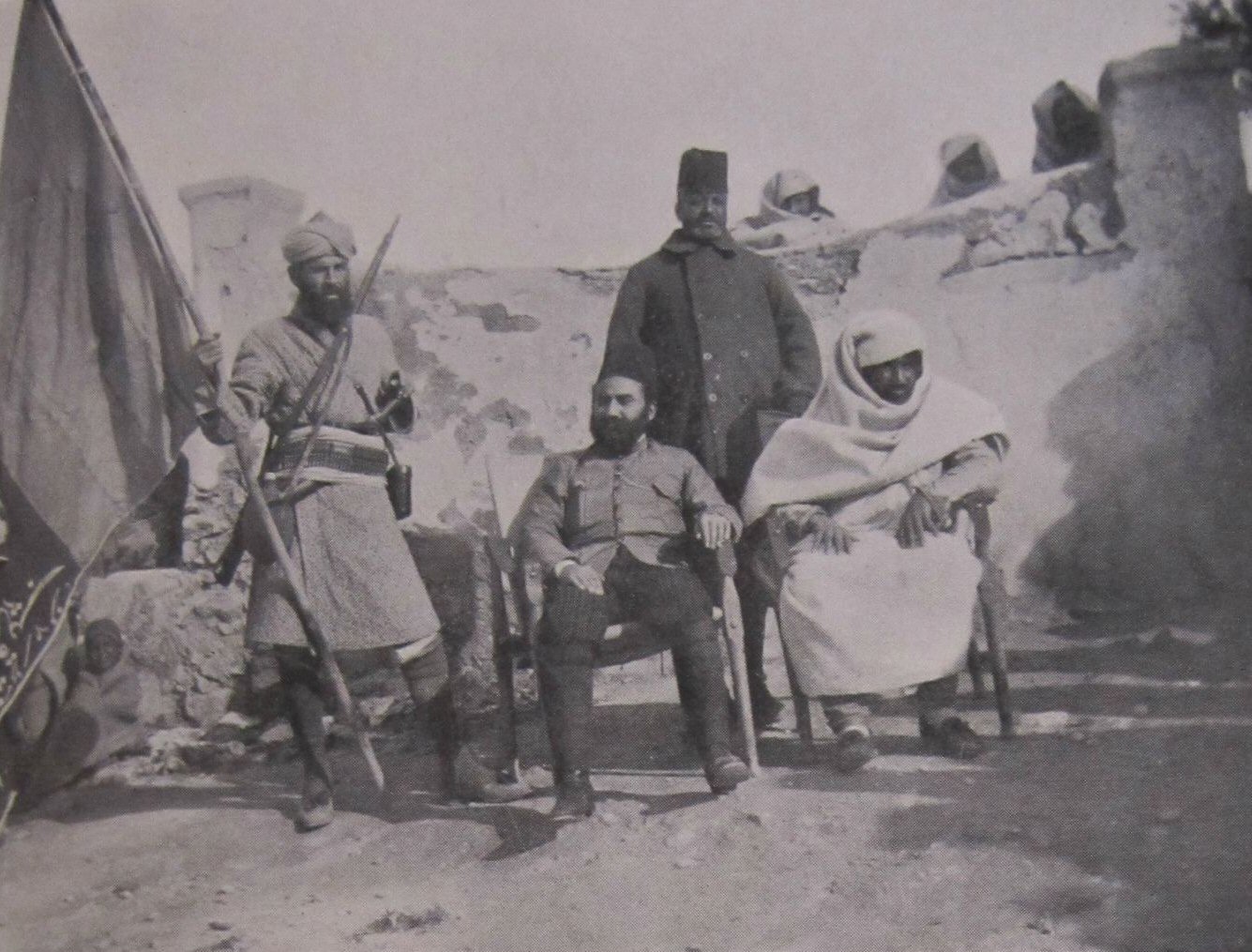 Image from Andy Shelton, 27 September 2012
Image from Andy Shelton, 27 September 2012
I managed to borrow a copy of "Adventures in Tripoli" through inter-library loan. I actually got a first edition from the library at Washington and Lee University. I've been reading it, and it's quite interesting. I took a picture of two photos from the book [on the same page]. The bottom photo is the one we have already seen. The caption states that it is "El Khani", standard bearer for Sulaiman al-Barouni and his resistance force in Tripolitania. The top photo is El Khani holding the flag with Sulaiman al-Barouni himself, and two others. The images can be found in the Libya (LY) Files section.
Andy Shelton, 27 September 2012
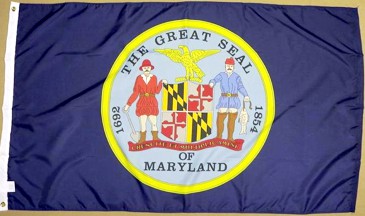 Image from Vanja Poposki, 8 August 2012
Image from Vanja Poposki, 8 August 2012
Former variant flag of the State of Maryland posted on "I Love Flags." (Source not provided.)
Vanja Poposki, 8 August 2012
This flag was certainly never official, and the white fimbriation on the quarters of the arms makes me think it was an amateur attempt, just to have the state represented in some parade or display of states. The current flag was adopted by the General Assembly in 1904, and this flag doesn't look like it dates from the 19th Century. It could have been carried by a state militia - a dark blue field with a state seal is standard practice for militias in the U.S.
Steve Kramer, 8 August 2012
Though it's not the image on American Flag & Gift, it does seem to represent the same flag. I take it this is an imitation of one of the Maryland Confederate flags. Does it match #2 well enough to be considered that design?
Peter Hans van den Muijzenberg, 15 January 2012
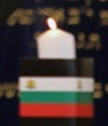 Reduced Image from Nachum Lamm, 28 August 2012
Reduced Image from Nachum Lamm, 28 August 2012
(Image cropped by UFE Editor - Click on picture to see full image)
Yesterday, there was a memorial service for the victims of the recent terror attack in Bulgaria. Some candles had small Israeli flags around their holders, but at least one had small Bulgarian flags. There is clearly a symbol on the upper stripe, at the hoist, but the picture is too small to make out what it might be.
Nachum Lamm, 28 August 2012
The symbol, even it is small, looks clearly like the actual Bulgarian Coat of Arms. Even though not official, it is quite often a practice to add a coat-of-arms to the flag.
Dieter Mayr, 2 September 2012
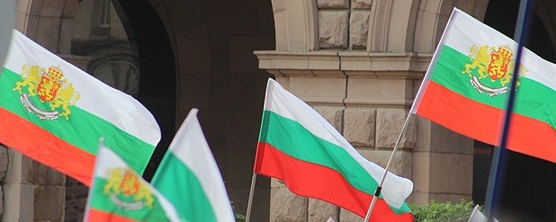 Photo from Nikolai Tihov, 27 June 2013
Photo from Nikolai Tihov, 27 June 2013
This is an unofficial version of the Bulgarian flag that is extremely popular, but has zero official status -
It features the full CoA on the left of the flag, but across the white and green fields. I think it became popular because people were used to having the CoA at the top-left during communist times, and so they started making this flag, but with a larger CoA because it is more colourful.
Nikolai Tihov, 27 June 2013
It is the same case with Spain; the public there prefers the national flag with the CoA because it is more bonita (pretty). Behold the Discreet Charm of Heraldry!
Rob Raeside, 28 June 2013
[Editorial Comment: See A State Flag?. Apparently there are slightly different variants in use, and although unofficial, it seems to exist and be commonly in use.]
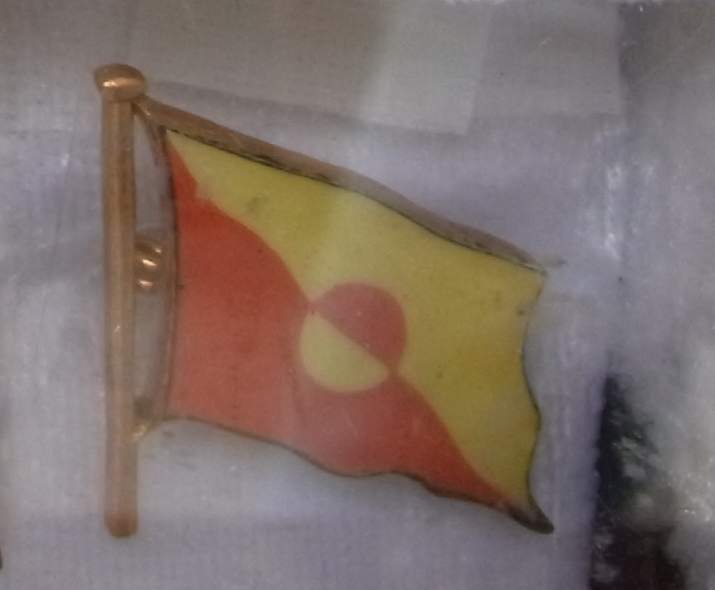 Image from Klaus-Michael Schneider, 9 September 2012
Image from Klaus-Michael Schneider, 9 September 2012
The flag on the pin is divided per bend into white (not yellow) and red. In the centre is a disc in counter changed colours. It's probably the flag of a shipping company, perhaps not German. The owner himself has no idea. Source: Pin collection of Walter Bock, spotted in Hamburg Downtown on 1 September 2012.
Klaus-Michael Schneider, 9 September 2012
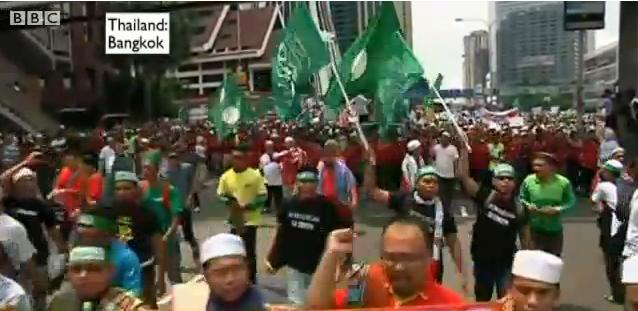 Image from Esteban Rivera, 21 September 2012
Image from Esteban Rivera, 21 September 2012
UFE flag spotted in Bangkok, Thailand, possible of religious origin. Plain green horizontal flag with white disc in the middle. Source was BBC online news video, 2:00, broadcasted on September 21, 2012.
Esteban Rivera, 21 September 2012